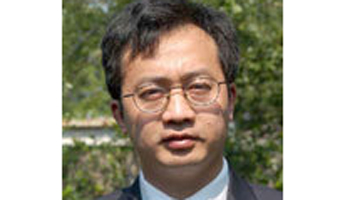Phi Beta Kappa’s 2016-17 Visiting Scholar is Professor Shuhai Xiao, who gives a special lecture on the “Cambrian Explosion” on Tuesday, Oct. 11, at 4:30 p.m. in Walter 145.
The “Cambrian Explosion” is one of the most dramatic events in the history of life on this planet.
This free lecture is specifically directed at undergraduates and is open to the Ohio University community.
The lecture is hosted by the Ohio University Chapter of Phi Betta Kappa and the Department of Geological Sciences.

Dr. Shuhai Xiao
Xiao is Professor of Geobiology at Virginia Tech and a world-renowned expert on the Ediacaran – the new geologic period that immediately precedes the Cambrian. In 2014, he was the recipient of the Geological Society of America’s Outstanding Contributions in Geobiology Award. The outline of his talk, which is entitled “On the Eve of the Cambrian Revolution” is as follows:
Abstract: Animals with familiar and easily recognizable body-plans diversified explosively about 541–520 million years ago, during an evolutionary radiation known as the Cambrian Explosion. The Cambrian Explosion had revolutionary impact on the Earth-life system, including the ecology of the biosphere, the global carbon cycle, and the global environments. The geologically rapid rise of modern animals has puzzled generations of biologists and geologists since Charles Darwin articulated this puzzle in his 1859 book “On the Origin of Species.” What came before the Cambrian Explosion? Were there animals before the Cambrian Period? What did the Precambrian animals look like? Did they have bones and shells? How did they live? How did they interact with other organisms? In this talk, I will present recent discoveries of early multicellular eukaryotes, including animals, from the Ediacaran Period (635–541 million years ago, Ma) that immediately preceded the Cambrian Explosion. I will highlight the new insights from these fossils, the challenges in decoding these ancient organisms, as well as the opportunities they offer to investigate the evolutionary intermediates between living animals and their closest living sisters.



















Comments